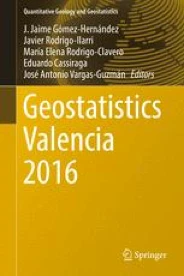Modelling asymmetrical facies successions using pluri-gaussian simulations
An approach to model spatial asymmetrical relations between indicators is presented in a pluri-Gaussian framework. The underlying gaussian random functions are modelled using the linear model of co-regionalization, and a spatial shift is applied to them. Analytical relationships between the two underlying gaussian variograms and the indicator covariances are developed for a truncation rule with three facies and cut-off at 0. The application of this truncation rule demonstrates that the spatial shift on the underlying gaussian functions produces asymmetries in the modelled 1D facies sequences. For a general truncation rule, the indicator covariances can be computed numerically, and a sensitivity study shows that the spatial shift and the correlation coefficient between the gaussian functions provide flexibility to model the asymmetry between facies. Finally, a case study is presented of a Triassic vertical …

